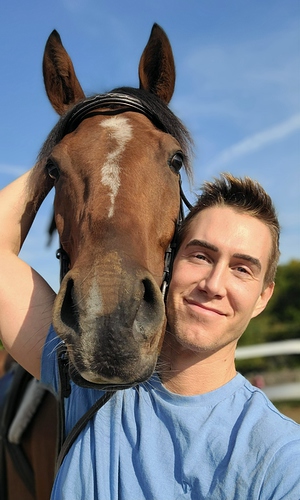The problem is less about breed affiliation, and more about lack of correct conformation education, period. The latter makes it so that they can’t differentiate between different breed TYPE, and poor vs correct conformation.
Every single breed of horse should be judged against the same standards of functional conformation, those Big Three. They are still a horse. They still need to be a front-light (for a front-heavy species) mobile hind end body whose legs are built to support impact work as in more than putzing around a HUS w/t/lope ring
From there, WITHIN those parameters, conformation differences are more suitable to Dressage vs Hunters vs Jumpers vs Cutting vs Reining vs pulling, the STB vs the TWH vs the Cleveland Bay vs the Arabian
All of those will have variations of good to excellent conformation that are simply a bit different than the next, but all within the above parameters
The Dressage and Reining horse still better have his neck come out above the point of their shoulder, the PoS should be excellent, the LS gap needs to be on point, but the Dressage horse’s neck will come out and naturally be higher, and the shoulder will likely be a different angle, than the Reiner, than the Hunter. The ASB has a very different look than a stock horse which is very different from a draft
But when you look past all that, the Big 3 still judge how functionally correct the horse is, how much real work his body is likely to stand up to for long. After that it’s about front legs being straight, and hind legs can vary a bit more as certain conformations are better for speed vs big jumps vs sitting, but STILL not too angled (sickle hocks) and STILL not too straight
Functional conformation is exactly like the Body Condition Scoring - 100% independent of breed or type or discipline or fitness.
It’s only within those parameters that you get more into discipline- and breed-specific differences, and ideal weight for a given task (racing vs broodmare for example)



 .
. .
. My current main horse has a relatively straight hind leg - it has not seemed to hinder him for our lower level career aspirations.
My current main horse has a relatively straight hind leg - it has not seemed to hinder him for our lower level career aspirations.


